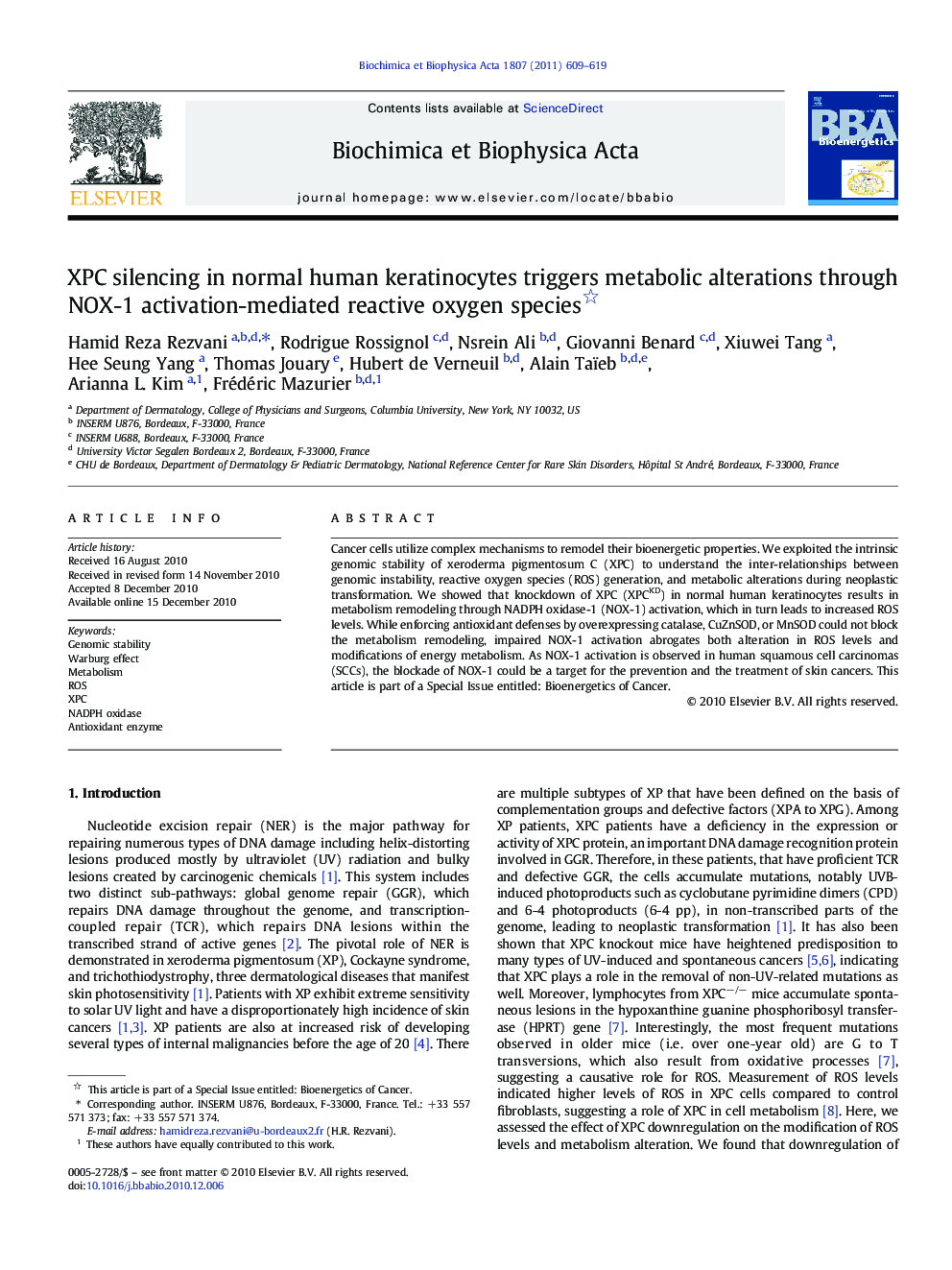| Article ID | Journal | Published Year | Pages | File Type |
|---|---|---|---|---|
| 1942703 | Biochimica et Biophysica Acta (BBA) - Bioenergetics | 2011 | 11 Pages |
Cancer cells utilize complex mechanisms to remodel their bioenergetic properties. We exploited the intrinsic genomic stability of xeroderma pigmentosum C (XPC) to understand the inter-relationships between genomic instability, reactive oxygen species (ROS) generation, and metabolic alterations during neoplastic transformation. We showed that knockdown of XPC (XPCKD) in normal human keratinocytes results in metabolism remodeling through NADPH oxidase-1 (NOX-1) activation, which in turn leads to increased ROS levels. While enforcing antioxidant defenses by overexpressing catalase, CuZnSOD, or MnSOD could not block the metabolism remodeling, impaired NOX-1 activation abrogates both alteration in ROS levels and modifications of energy metabolism. As NOX-1 activation is observed in human squamous cell carcinomas (SCCs), the blockade of NOX-1 could be a target for the prevention and the treatment of skin cancers. This article is part of a Special Issue entitled: Bioenergetics of Cancer.
Research Highlights►XPC downregulation induces ROS generation via NOX-1 activation. ►XPC silencing triggers metabolism remodeling through the elevation of ROS level. ►Impairment of NOX-1 activation restores XPC-silencing induced metabolism remodeling. ►NOX-1 expression in SCCs is higher than healthy skin.
